Pressure Washer Buying Guide
- May 13, 2024
- 0 comment
Pressure washers are powerful tools that help clean stubborn stains, debris, and peeling paint, streamlining many outdoor cleaning tasks. Whether you’re a homeowner looking to spruce up your siding, driveway, or outdoor furniture, knowing how to choose and use a pressure washer can save you time and effort.
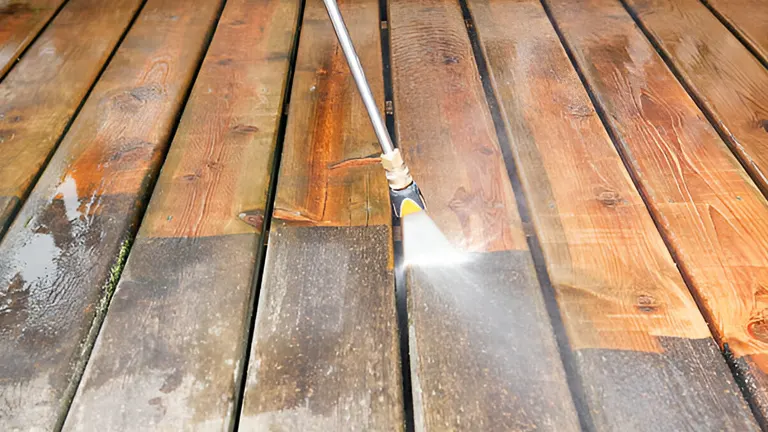
Here’s a detailed guide based on expert insights from Consumer Reports, designed to help you select a pressure washer that best suits your needs and ensure you use it safely and effectively.
Understanding Pressure Washers
Pressure washers function by using either a gas engine or an electric motor to power a pump that forces water through a nozzle at high pressure. The intensity of a pressure washer is measured in PSI (pounds per square inch), indicating the force of water created through the machine. For tough cleaning jobs like concrete, a higher PSI (around 2,000 to 3,000) is effective. Conversely, lighter tasks such as cleaning patio furniture or decking require a gentler touch, around 1,500 PSI.
Selecting the Right PSI for Cleaning Jobs
- Light Duty (1,899 PSI and ½ – 2 GPM): Ideal for small tasks such as cleaning outdoor furniture and vehicles.
- Medium Duty (1,900 – 2,788 PSI and 1-3 GPM): Great for cleaning exterior siding, fences, patios, and decks.
- Heavy Duty (2,800 PSI at 2 GPM or more): Suited for larger and tougher jobs that require more power.
- Commercial (Starts at 3,100 PSI and up to 4 GPM): Best for professional cleaning services needing maximum power.
Nozzles and Spray Tips
The effectiveness of pressure washers also hinges on the type of nozzles or wand tips used. While adjustable wands offer convenience by changing angles swiftly, interchangeable nozzles provide precise control with fixed spray patterns ranging from 0-degree to a wide 65-degree angle. However, due to safety concerns with high-intensity sprays that can cause injuries, Consumer Reports advises against using nozzles that provide a 15-degree spray or less, particularly the 0-degree (red) nozzle, due to its potential to cause harm with its pinpoint blast.

When selecting a pressure washer, one crucial aspect to consider is the type of nozzle it comes with. All pressure washers are equipped with interchangeable nozzles, allowing you to customize the spray pattern according to your specific cleaning needs. These nozzles are typically color-coded, making them easy to identify and switch out as needed. Here’s a breakdown of the universal spray tips and their corresponding uses:
- 0 degrees (Red Nozzle): This is the most powerful and concentrated nozzle setting. It produces a very narrow jet of water, making it perfect for tackling stubborn stains and hard-to-clean areas where maximum impact is required.
- 15 degrees (Yellow Nozzle): Slightly less intense than the red nozzle, this setting is ideal for heavy-duty cleaning tasks. It’s great for stripping paint, cleaning concrete, and washing second-story exteriors without the need for a ladder.
- 25 degrees (Green Nozzle): Often used for general cleaning purposes, this nozzle provides a slightly wider spray, which makes it suitable for power washing surfaces like decks, siding, and driveways without causing damage.
- 40 degrees (White Nozzle): This nozzle creates a wider spray for cleaning larger surfaces. It is gentle enough to be used on vehicles, patio furniture, boats, and other surfaces that might be susceptible to damage with a more concentrated stream.
- 65 degrees (Black Nozzle): The gentlest setting, this low-pressure nozzle is typically used for applying soap and other cleaning agents. It covers a large area and is ideal for pre-soaking surfaces before cleaning them more thoroughly with a higher pressure nozzle.
Electric vs. Gas-Powered Pressure Washers
Electric pressure washers are suitable for most residential jobs and are prized for their affordability, lightweight, and quieter operation compared to their gas-powered counterparts. They are also easier to store as they don’t require winterization with antifreeze if kept indoors. However, their use is limited to the length of their cord and the availability of a power outlet, generally around 50 feet.
On the other hand, gas-powered models offer higher PSI outputs (typically 2,500 to 3,500), making them ideal for more demanding tasks. However, they are noisier, costlier, and emit carbon monoxide, thus requiring careful handling and outdoor usage only.
Comparative Overview of Gas, Electric, and Battery Pressure Washers
| Type | Pros | Cons | Price Range |
|---|---|---|---|
| Gas Pressure Washers | ● Delivers highest-pressure water. ● Quickly cleans large areas such as decks, siding, and driveways. ● Effective against tough gunk like chewing gum and tree sap. ● More pressure allows wider nozzle settings for effective cleaning. | ● Noisy and heavy. ● Requires regular tune-ups. ● Risk of overheating with prolonged idling. –Must be winterized with antifreeze. ● Increased risk of injury. Can damage wooden surfaces or chip paint. | $250 to $600 |
| Electric Pressure Washers | ● Ideal for small decks, patios, outdoor furniture. ● Light and quiet. ● Minimal upkeep, no exhaust. ● Convenient start and stop. Easy to store due to small size. | ● Lower water pressure leads to longer cleaning times. ● Less sturdy wands and nozzles (plastic vs. metal). ● Limited cleaning area by cord and hose length. ● Hoses around 25-30 feet; power cords around 35 feet. | $100 to $380 |
| Battery Pressure Washers | ● Portable, uses lithium-ion battery. ● Suitable for light-duty tasks like washing cars. ● Batteries might be compatible with other tools from the same manufacturer. | ● Not a substitute for more powerful models for deep cleaning. ● Lower pressure, typically maxing out around 500 psi compared to higher psi from other types. ● Limited by battery life and power compared to gas or corded models. | $150 to $550 |
Features to Look For
When shopping for a pressure washer, consider models with user-friendly features such as onboard cord storage, wheels for mobility, and a stable design that can be maneuvered with one foot. Some models come with soap tanks which eliminate the need for a separate container for cleaning agents. Also, look for models that provide a variety of nozzles to suit different cleaning needs.
Safety Tips
Safety is paramount when operating pressure washers. Always start with the widest nozzle setting and maintain a minimum distance of two feet from the surface, gradually moving closer as needed. Wear protective gear like goggles and sturdy shoes, and never direct the spray towards people, animals, or delicate surfaces. Furthermore, never use a pressure washer in an enclosed space to avoid risks associated with carbon monoxide.
Winterizing Your Pressure Washer
If you plan to store your pressure washer in a garage or shed during the cold months, ensure to winterize it by adding antifreeze to the pump and draining any remaining water from the hose and wand to prevent damage from freezing.
How to Winterize a Pressure Washer: A Step-by-Step Guide
- Completely Drain Reservoir: Start by ensuring no liquids are left in the tank or system. Liquids can expand in freezing temperatures and damage the pump. Run the pressure washer at low pressure for about a minute to flush out any remaining water or detergent.
- Blow Out Plumbing and Hose Lines: Disconnect and drain all components like the spray gun, wand, and hoses. Use an air compressor to blow out residual liquid from the lines, preventing any water from freezing and causing damage.
- Rinse with Antifreeze: Circulate a small amount of antifreeze through the system to protect internal components from freezing. Remember to blow out any excess afterward to avoid contamination.
- Clean Filters: Remove and clean all pump filters to eliminate debris that could clog and impair the system.
- Clean Nozzles: Detach and meticulously clean the nozzles, focusing on removing any deposits to prevent blockages and corrosion.
- Protect from Rodents: Small rodents can cause significant damage to your equipment. Implement rodent control measures such as deterrents or traps around your storage area.
- Disconnect the Battery: For battery-operated systems, disconnect the battery to prevent it from draining during the off-season.
- Gas-Powered Pump Care: If using a gas-powered pressure washer, drain the gasoline or add a fuel stabilizer and run the engine briefly to distribute it through the fuel lines. Disconnect the spark plug wires and consider replacing old spark plugs.
- Clean Exposed Surfaces: Wipe down all exterior surfaces with a damp cloth to remove dust and debris, which helps prevent rust and keeps the washer in good condition.
- Store in a Dry Location: Keep your pressure washer in a dry, clean place where it’s protected from the elements. Using a cover can help keep dust at bay and prevent moisture accumulation. Avoid storing in locations prone to freezing temperatures.
- Follow Manufacturer Recommendations: Always refer to your pressure washer’s manual for specific care instructions to avoid damage and maintain its efficiency.
By adhering to the tips in this guide, you’ll be well-equipped to select a pressure washer that aligns perfectly with your cleaning requirements. Safely and efficiently tackle a variety of cleaning tasks around your home or business, ensuring your spaces remain pristine and well-maintained.
FAQs
- How do I determine which pressure washer to buy?
When selecting a pressure washer, consider both the pressure output (PSI – pounds per square inch) and water volume (GPM – gallons per minute). Machines with higher PSI and GPM ratings clean more effectively and quickly but tend to be more expensive than lower-rated models. - What PSI do I need for a pressure washer?
For general cleaning tasks such as concrete, exterior siding, or driveways, a pressure washer with 2,000 to 2,800 PSI and 2 to 3 GPM is adequate. This range ensures efficient cleaning without excessive power that could damage surfaces. - Which PSI pressure washer is most versatile?
Pressure washers in the range of 2,000 to 3,200 PSI are highly versatile. They are effective for cleaning vehicles, home siding, fences, and garage floors. Models closer to 3,200 PSI are also capable of removing tougher stains. - What makes a good pressure washer?
A good pressure washer delivers a balance of power, efficiency, and usability. For example, the Ryobi RY142500, with a 2500 PSI rating, is considered one of the best for most homeowners due to its brushless motor and overall performance. - Is 2000 PSI enough to clean concrete?
Yes, a 2,000 PSI pressure washer can effectively clean concrete. It requires more time than higher PSI units but can achieve thorough cleaning results. - Is 600 PSI sufficient for washing a car?
Yes, 600 PSI is sufficient for washing cars, especially if you’re dealing with low water pressure issues. It’s also effective on synthetic materials and during colder months. - Can 3000 PSI clean concrete effectively?
Yes, 3000 PSI is more than enough for cleaning concrete and can even remove tough contaminants like paint and heavy tire marks. - Which is better: gas or electric pressure washer?
Gas pressure washers offer more power and durability but are more expensive upfront and have ongoing fuel costs. Electric models are less powerful but quieter, cheaper, and easier to maintain. - Should I choose a hot or cold pressure washer?
Choose based on your cleaning needs: cold water washers are great for general cleaning, while hot water washers are necessary for removing stubborn substances like oil and grease and achieving sterile cleanliness. - What is the difference between a pressure washer and a power washer?
The primary difference is that power washers use heated water, making them effective for removing stubborn stains with steam pressure. Pressure washers rely on the force of unheated water.
We hope this guide has equipped you with the insights you need to choose the right pressure washer for your tasks! Have you had experiences with different pressure washers or additional tips to share? We’d love to hear your thoughts and stories in the comments below. If you found this guide helpful, please consider sharing it with friends or on social media to help others make informed decisions too. Happy cleaning!

David Murray
Forestry AuthorI'm David Murry, a forestry equipment specialist with a focus on chainsaw operation. With over 13 years of experience, I've honed my skills in operating and maintaining a wide range of machinery, from chainsaws to log splitters. My passion for the outdoors and commitment to sustainable forestry drive my work, which emphasizes safety, efficiency, and staying updated with industry advancements. Additionally, I'm dedicated to sharing my expertise and promoting environmental awareness within the forestry community.

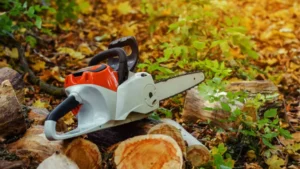

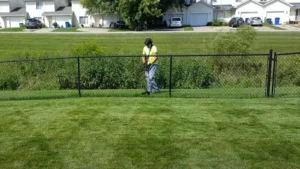
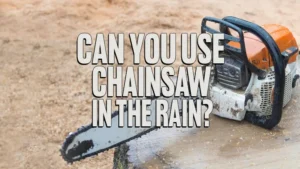
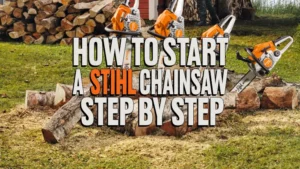






Leave your comment